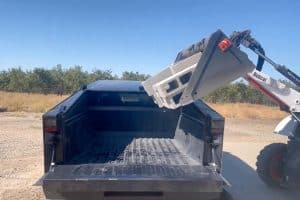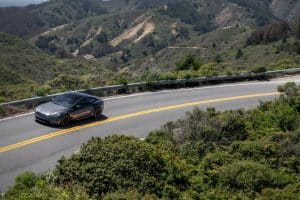- ⛽ Ford is shifting production toward two gas vehicles.
- 🚗 Plans to reduce production of F-150 Lightning electric pickup by around half.
- 🧑💼 1,400 workers to be impacted; 700 transferred to support gas-powered Bronco and Bronco Raptor production.
- 🔄 Remaining workers offered positions or retirement options.
- 🌐 Ford forecasts continued EV sales growth but adjusts expectations.
- 🏭 Ford to hire 900 new workers, add a third shift at Michigan Assembly Plant.
- 📈 Despite strong EV sales, Ford aims for a balance of powertrain configurations to meet consumer demand.
- 🤖 Ford CEO sees a bright future for EVs, especially with upcoming digitally advanced EVs and access to Tesla’s charging network.
- ❓ No response from Ford on when F-150 Lightning production will return to current levels.
- 🚗 Ford finished 2023 with its best-ever quarter for EVs but faces challenges with dealer participation in its “Model e” EV sales program.
The automotive industry is in the midst of a transformative period, with manufacturers adapting to the evolving preferences of consumers and the changing landscape of energy sources. In a recent announcement, Ford has revealed a strategic shift in its production, signaling a move towards gas vehicles. Let’s delve into the key takeaways and implications of this decision.
Ford’s Production Pivot
⛽ Ford’s decision to shift production towards two gas vehicles reflects a significant strategic move. This shift is not just a change in manufacturing processes but represents a broader response to the dynamic market forces influencing the automotive sector.
F-150 Lightning Production Reduction
🚗 One of the focal points of Ford’s shift is the reduction in the production of the F-150 Lightning electric pickup by approximately half. This move raises questions about the current and future demand for electric vehicles (EVs) and the internal dynamics within Ford’s production ecosystem.
Impact on Workforce
🧑💼 The human element cannot be overlooked. The decision is set to impact 1,400 workers, with 700 being transferred to support the production of gas-powered Bronco and Bronco Raptor. The remainder faces decisions regarding positions, retirement options, or potential reassignment within the Ford network.
Ford’s EV Sales Forecast
🌐 Despite the reduction in electric pickup production, Ford remains optimistic about the electric vehicle market. The company forecasts continued growth in EV sales, albeit at a rate lower than initially anticipated. This cautious optimism reflects the industry’s complex interplay of consumer demand, infrastructure, and regulatory landscapes.
Expansion Plans and Workforce Growth
🏭 To support its gas vehicle production, Ford is set to hire 900 new workers. Additionally, the Michigan Assembly Plant will add a third shift, boosting production to seven days a week. This expansion signals a commitment to meeting consumer demand for traditional gas vehicles.
Striking a Balance
📈 Ford’s approach is not an outright dismissal of electric vehicles. Instead, the company aims for a delicate balance of powertrain configurations. This strategic move aligns with the goal of meeting diverse consumer preferences while ensuring growth and profitability.
Ford CEO’s Vision
🤖 Jim Farley, Ford CEO and President, envisions a bright future for electric vehicles. With upcoming digitally advanced EVs and access to Tesla’s charging network, Ford positions itself at the forefront of the electric revolution. Farley’s vision hints at a future where traditional and electric vehicles coexist harmoniously.
Unanswered Questions
❓ One lingering question is when Ford plans to bring F-150 Lightning production back to its current levels. The absence of a response raises curiosity about the company’s timeline and the factors influencing this decision.
2023: A Milestone Year
🚗 Despite the recent pivot, it’s crucial to acknowledge Ford’s achievements in 2023. The company marked its best-ever quarter for EVs, securing best-selling vehicles in two electric segments. However, challenges persist, as only half of Ford dealers have joined the “Model e” EV sales program.
In conclusion, Ford’s strategic shift is a testament to the ever-changing automotive landscape. As the industry navigates the delicate balance between tradition and innovation, Ford’s approach reflects a nuanced understanding of market dynamics. The road ahead holds challenges, but with a visionary leader at the helm, Ford aims to steer confidently into the future.





